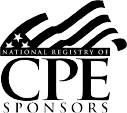
“The value of an operating business is based on its expected future earnings.”
That is the line I often hear when discussing how to determine the fair market value of an operating business. It is a very specific and simple description of a formula that many of us first came across in a finance class in college, shown below:
Value = Income / Risk
The main problem business appraisers have is determining what those variables (income and risk) are. Once those problems have been solved, the rest of the analysis flows pretty well from there.
In one of my recent assignments, I discovered something in the middle of my analysis. The subject business did not have any expected future earnings. The risk of achieving $0.00 is pretty low. However, the formula above returned an answer that I did not believe accurately reflected the value this business had. So, I turned to the adjusted net asset method.
I looked at every single asset and liability reported on the balance sheet as of the effective date. I spoke with management, examined financial statements, and did some research. The Company expected to receive some of the outstanding AR. However, my client inaccurately booked the inventory at a much higher number than its actual worth. Part of this was due to inaccurate bookkeeping on the part of my client. The other part was that there were not many potential buyers out there who would consider purchasing the inventory either. The company had not updated the equipment list for about eleven years. The inventory included several items. Some items had broken down and my client discarded them, while they used others for their parts to fix other items.
The liabilities side of the balance sheet suffered from similar problems. I found a ‘loan’ that actually was no such thing. That is how the owner had been tracking his rent payments. I found several IRS notices that described taxes and penalties owed that had not been tracked on the balance sheet. The one loan outstanding the business had, was showing a wildly incorrect amount owed. The balance shown was a negative number. However, the term of the loan still had about 7 years left.
At the end of my analysis, there were significantly more liabilities owed than there were tangible assets. Based on the facts and circumstances surrounding this particular case, there were no expected future earnings. Therefore, there was no intangible value to be had. The net result was to conclude to a value that was considerably less than $0.
It is important to keep in mind that sometimes the subject business doesn’t have any future earnings. In such cases, the business may very well have a negative value.
You may want to check out
- What Does the Business Appraisal Process Look Like?
- Surprises
- What Do the Financials Actually Tell Us?
- Asking the Right Questions
- Market Data for Pricing a Business
- Never Waste a Good Crisis
Recommended Courses
ISBA Learning: Looking for authoritative business appraisal courses, tools, webinars, and more? Stop trying to create resources from scratch and start taking advantage of having exactly what you need right at your fingertips in ISBA Learning.











